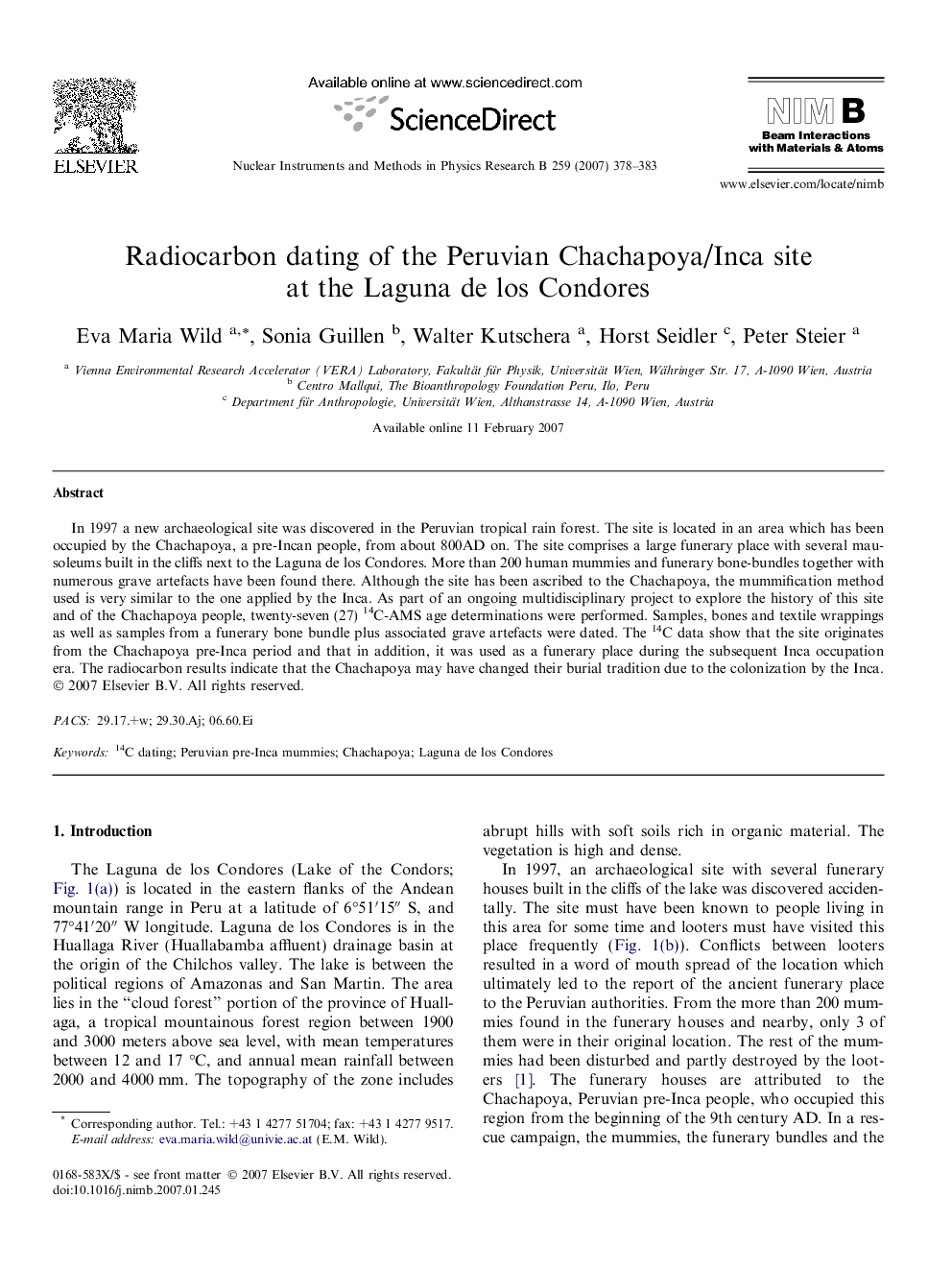| Article ID | Journal | Published Year | Pages | File Type |
|---|---|---|---|---|
| 1685850 | Nuclear Instruments and Methods in Physics Research Section B: Beam Interactions with Materials and Atoms | 2007 | 6 Pages |
In 1997 a new archaeological site was discovered in the Peruvian tropical rain forest. The site is located in an area which has been occupied by the Chachapoya, a pre-Incan people, from about 800AD on. The site comprises a large funerary place with several mausoleums built in the cliffs next to the Laguna de los Condores. More than 200 human mummies and funerary bone-bundles together with numerous grave artefacts have been found there. Although the site has been ascribed to the Chachapoya, the mummification method used is very similar to the one applied by the Inca. As part of an ongoing multidisciplinary project to explore the history of this site and of the Chachapoya people, twenty-seven (27) 14C-AMS age determinations were performed. Samples, bones and textile wrappings as well as samples from a funerary bone bundle plus associated grave artefacts were dated. The 14C data show that the site originates from the Chachapoya pre-Inca period and that in addition, it was used as a funerary place during the subsequent Inca occupation era. The radiocarbon results indicate that the Chachapoya may have changed their burial tradition due to the colonization by the Inca.
